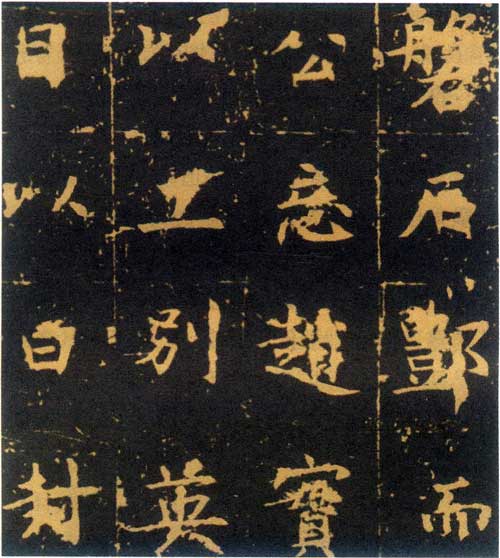Zhao Mo was a calligrapher enshrined in the Imperial Academy during the reign of Emperor Taizong, and the prince's right prisoner, Kai Cao, joined the army. His calligraphy and painting skills are excellent. "Xuanhe Shupu" records that "the imitation of the calligraphy is followed by imitation. I first studied Xixian and studied the collection of Qianwen. The combination is not less Huairen, but the ancient strength is not the same." Emperor Taizong of the Tang Dynasty was delighted to receive "Lanting" Later, he ordered Zhao Mo, Han Daozheng, Feng Chengsu, and Zhuge Zhen to each make several copies and give them to the crown prince, kings, and ministers. "Xuanhe Shupu" states that the Imperial Household Office of the Song Dynasty once collected "Moji Thousand Character Essays", but the only surviving handwriting is "Gao Shilian's Tomb Zhao Ji".
"The Legend of Gao Shilian's Tomb", written by Xu Jingzong in regular script by Zhao Mo, was established in stone in the sixth year of Yonghui (655). His calligraphy is neat and elegant. Ming Dynasty scholar Zhao Kan's "Graphite Engraving Hua" was praised as "generally similar to Europe and Yu". Liu Xizai's "Yi Gai" said that his writing is as sophisticated and elegant as Wang Zhijing's. Kang Youwei also had a high evaluation of Zhao Mo in "Guang Yi Zhou Shuang Ji": "Zhao Mo's "Princess Lanling Monument", "Gao Shilian's Tomb Zhao Ji" and "Cui Dunli Stele" are all similar in style, all clear and refreshing, and European. "Yu is near." Kang claimed that "Princess Lanling Stele" and "Cui Dunli Stele" were written by Zhao Mo. Although this is an obvious error, it can also be seen that he respected Zhao Mo.

Zhao Mo's "The Legend of Gao Shilian's Tomb" (detail) 655








